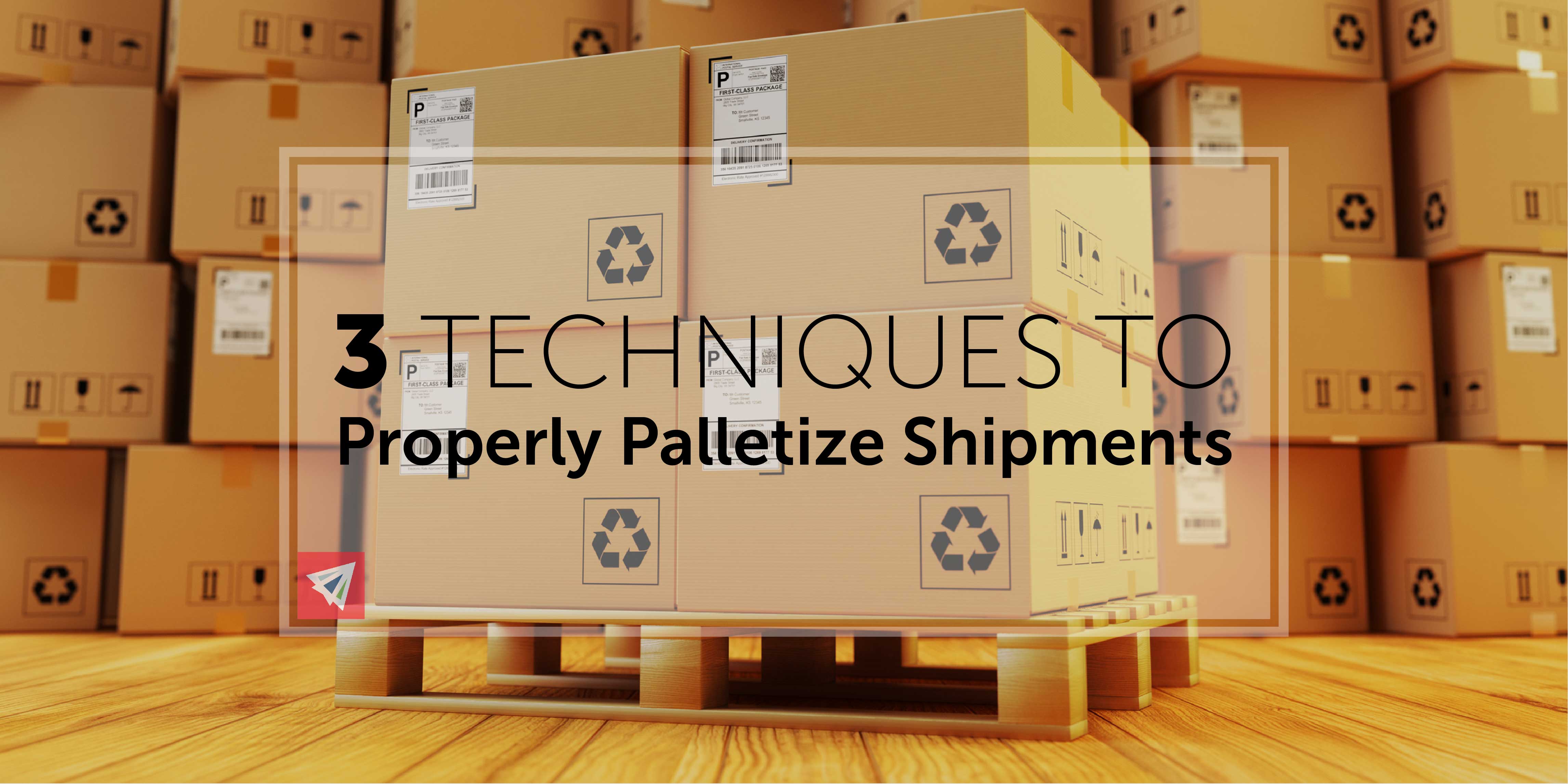Research conducted by our internal marketing team demonstrates that the #1 complaint of international shippers is cargo damage. At some point during the shipping process – loading on a truck, in transit, consolidating, deconsolidating, etc. – cargo shifts around and inevitably shows up at your company door in “heavily used” condition. Over the years of shipping goods, we have come to realize that this damage can be avoided through proper palletization.
Palletizing Cargo
A very important factor to consider when palletizing cargo is the type of pallet your goods are being loaded onto. There are all sorts of different types, sizes, materials, structural integrity, stackability, and other varying factors that make certain pallets better than others. On the surface level, you should at least decide whether wood pallets or plastic pallets are a better option for your company.
Palletizing shipments is, as it sounds, the process of loading goods onto a pallet. The issue here isn’t that shippers lack knowledge regarding how to get their goods onto a pallet, but rather the manner in which so many load their goods onto a pallet is dangerous and inefficient.
3 Techniques to Properly Palletize Shipments to Avoid Damage
From our years of experience working and speaking with warehouse managers, employees, and 3rd party logistics companies, these are our top 3 favorite techniques for palletizing shipments to avoid damage:
1) Effectively Shrink Wrapping Your Cargo
Shrink wrapping – yes, we all do it and we all know what it is. But so many shippers are shrink wrapping their cargo ineffectively and putting themselves at danger for damaged cargo and expensive, time-consuming claims processes. Here’s how it should be done:
You know that stuff you wrap around your daily ham sandwich for lunch? Yeah. Pretty much the same stuff you’ll be using to secure your pricey shipments to a pallet, so doing it right is in your best interest.
All cargo should be shrink wrapped with a minimum of 5 layers in an upwards spiraling manner. At every full rotation, you should rotate your shrink wrap 180 degrees to make an “X” for each layer on the same side. After reaching and securing the top, do the same “X” rotating pattern on the opposing side of the cargo. After reaching the bottom, move it to one of the 2 open sides (so on so forth). By the end, you should have 5 layers of shrink wrapping surrounding your cargo with the upwards “X” pattern on each side of the cargo.
This shrink-wrapping process ensures maximum strength and holding. It also makes it easy to count how many times you have wrapped your cargo to make sure you don’t forget a layer or two. Trust us when we say – shrink wrapping can feel hypnotic when you’ve done it to multiple pallets in a row. You don’t want to forget the pattern or number of layers you use to secure your cargo.
2) Vibration Damage Avoidance
Vibration refers to the shaking, mild or harsh, that cargo will experience in transit due to mechanical handling. Many shippers only view catastrophic machine failures as dangerous for cargo (truck accident, forklift dropping a package, etc.) However, trucks, forklifts, ocean lines, airplanes, and trains all induce some degree of vibration on your palletized cargo.
Much of the damage due to vibration can be avoided through how you stack your cargo. Your pallet may experience anywhere from 5 minutes to several weeks of vibrations from machinery. The greatest tip to avoid damage from vibration (aside from proper packaging and padding the cargo) is by properly stacking your cargo. If you have stiffer boxes, place your heaviest cargo in it, package it tightly, and place the box at the bottom of the pallet. This will help to eliminate vibrations from traveling up the pallet and causing scuffing on your cargo.
3) Bracing and Protecting
We’ve written articles in the past on blocking and bracing your cargo as it pertains to cargo within a shipping container. However, bracing a container in it’s entirety doesn’t necessarily inhibit palletized cargo from shifting and being damaged.
When you palletize goods, shrink wrapping may help to keep the goods from shifting on the pallet. But plastic shrink wrapping is thin, puncturable, and weak when playing the role of “armor”.
Before shrink wrapping your cargo to a pallet, we highly suggest creating a protective wall around your goods. This is most easily done with spare cardboard, but other materials may suffice. Although these walls may be thin, the added strength helps to keep cargo secure to the pallet when shrink wrapped, and resistant to tears and scrapes.
Conclusion
The two most common damages experienced when shipping goods on a pallet are damages due to: shaking/vibration, and scrapes/punctures/scuffs from external sources. Vibrations can cause internal parts to fail, or palletized goods to rub against each other and damage components. External sources of damage are hard to avoid encounters with – forklifts, trucks, machinery – they all contribute to higher risk. We recommend that shippers create an external cardboard wall around their palletized goods and shrink wrap them correctly (as mentioned above.) This will help to keep cargo secure while simultaneously avoiding damage from external sources. Furthermore, the method in which you stack your cargo can help it to eliminate vibrations and keep components from coming loose or breaking.
If you have any questions regarding palletizing your goods, call one of our team members and we would be happy to help you out!
